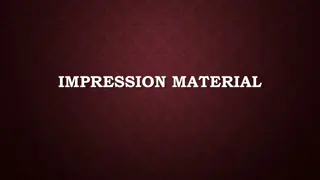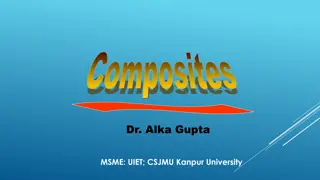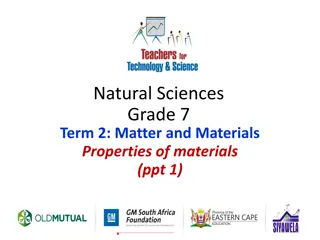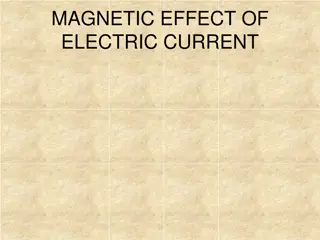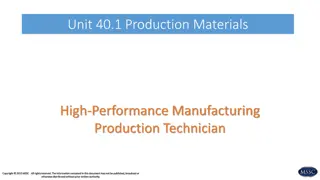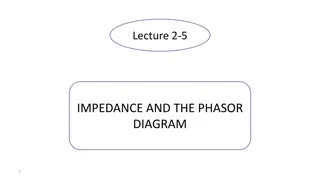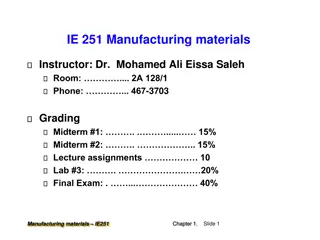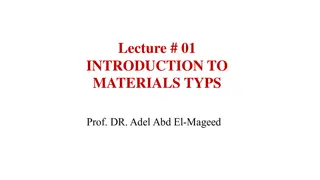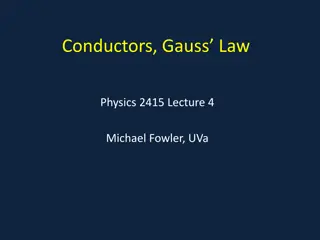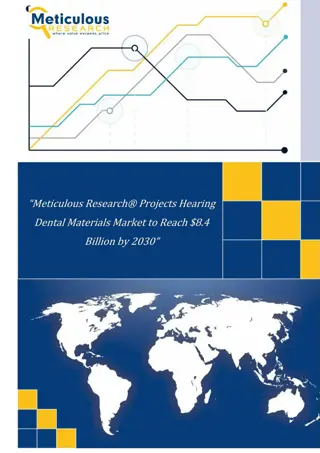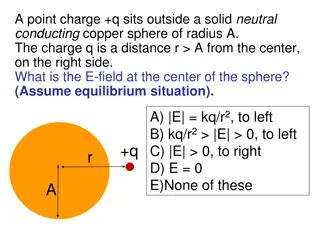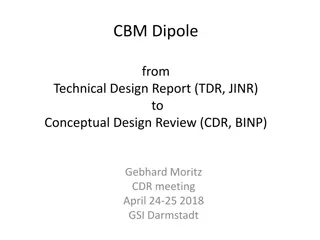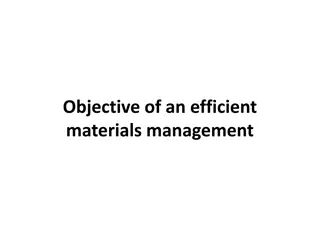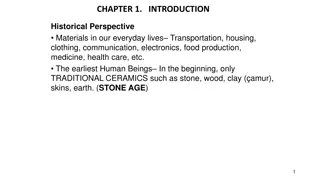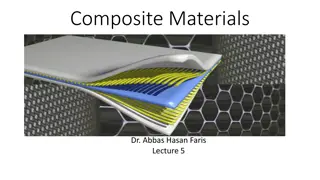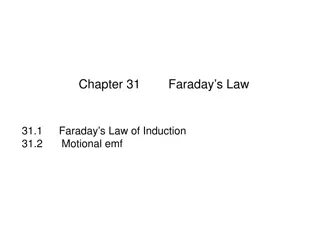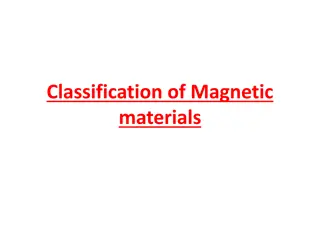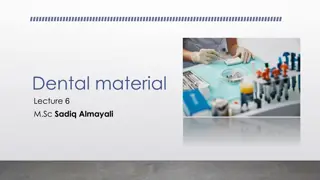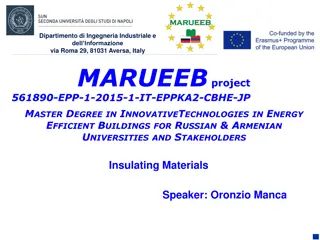Square Clamp Flat Conductor
Nexus Metal & Alloys is one of the leading manufacturers, exporters, and suppliers of world-class Square Clamp Flat Conductor, Square Clamps, Square Conductor Clamp, Square Tape Conductor Clamp, and Square Clamp Flat at very cheap rates from Mumbai, Maharashtra, India.
1 views • 3 slides
Electrical Conductor Ampacity Calculation Scenarios
Various scenarios are presented involving the calculation of allowable ampacity for different types of electrical conductors connected to circuit breakers with temperature limitations. The calculations consider factors like conductor material, size, temperature ratings, and ambient conditions to det
0 views • 140 slides
Physics Chapter 27 Practice Problems
The chapter 27 problems involve concepts related to current, drift speed of electrons, current density, resistance, resistivity, temperature effects on resistance, and power calculations. The problems cover scenarios such as cathode ray tubes, aluminum wires, gold wires, tungsten wires, conductor re
0 views • 12 slides
Understanding Voltage Drop in Electrical Systems
Electrical calculations often focus on current or voltage drop to determine proper conductor sizes. Excessive voltage drop can lead to issues like flickering lights, poor heating, and overheating of motors, requiring attention to wire sizes and the National Electrical Code recommendations. Explore t
0 views • 20 slides
Significance of Raw Materials in Food Processing
Effective selection of raw materials is crucial for ensuring the quality of processed food products. The quality of raw materials directly impacts the final products, making it important to procure materials that align closely with processing requirements. Quality evaluation, including microbiologic
2 views • 30 slides
CIGRE Canada Study Committees Update Meeting 2021: Advancing Overhead Lines Technology
Study Committee B2 focuses on improving overhead lines technology, ensuring reliability, and environmental compatibility. The Canadian representative, Pierre Van Dyke, plays a key role in Technical Direction and various advisory groups. Working groups within SC B2 address diverse topics such as dyna
0 views • 12 slides
Understanding Dental Impression Materials and Techniques
Dental impression materials are essential in dentistry to create precise negative records of the oral tissues. The process involves obtaining a negative impression and then producing a positive reproduction using materials like dental stone. These materials must meet specific desirable properties to
1 views • 18 slides
Understanding Composite Materials: Properties and Applications
Composite materials are combinations of chemically distinct substances that offer improved properties over individual materials. They can be natural or synthetic, with examples like wood and bamboo. Composites consist of reinforcing fibers or particles embedded in a matrix material. Smart materials,
1 views • 9 slides
Understanding DC Motors: Principles and Operations
The introduction to DC motors covers the types of DC machines, such as generators and motors, and explains how they convert energy. By exploring the force on a current-carrying conductor in a magnetic field, the principles behind DC motor operation are clarified. The magnitude and direction of force
0 views • 20 slides
Understanding Physical Properties of Materials in Grade 7 Natural Sciences
Exploring the physical properties of materials like strength and flexibility helps us decide which materials to use for specific purposes. Strong materials like steel and concrete are used in construction, while flexible materials like rubber and copper wire have different applications. Consideratio
1 views • 17 slides
Exploring the Conductivity of Metals in Electrical Circuits
This science fair project investigates how different metals affect the amount of current in an electrical circuit. It explores why metals are used to conduct electricity, which metal is the best conductor, and includes a hypothesis based on research findings. The experimental design involves setting
0 views • 15 slides
Exploring the Magnetic Effect of Electric Current
Understanding electromagnetism involves recognizing how an electric current in a conductor generates a magnetic field around it. This phenomenon was first observed by Hans Ørsted in 1820, leading to discoveries about magnetic field patterns for various conductor shapes. By studying straight wires,
0 views • 30 slides
Engineering Materials and Production Techniques Overview
Learn about the various types of engineering materials used in high-performance manufacturing, including natural and synthetic materials. Explore the properties of materials, such as strength, conductivity, and resistance. Discover the different categories of metals, alloys, and polymers commonly ut
0 views • 19 slides
Understanding Impedance and Phasor Diagrams in AC Circuits
Resistive elements in AC circuits exhibit zero phase shift between current and voltage due to their angles. Inductors introduce inductance when connected to AC sources, generating magnetic flux that affects conductor charges. Faraday and Lenz's laws explain induced voltage and current direction base
0 views • 18 slides
Development of Ultra-Thin Magnets for FCC-ee Experiments
Overview of the motivation, concept, and design principles behind the development of ultra-thin magnets for FCC-ee experiments, focusing on obtaining transparent magnets, high-strength conductor development, magnet design, quench protection, and vacuum vessel transparency. The project aims to create
0 views • 9 slides
Understanding Three-Way and Four-Way Switches in Electrical Systems
Explore the intricacies of Three-Way and Four-Way switches with detailed diagrams and explanations. Learn about wiring configurations, power flow, and essential rules for installation. Gain insights into switch types, common terminals, and conductor connections for effective electrical control setup
0 views • 14 slides
Materials Science: Revolutionizing Innovation in the Next Decade
Materials science is poised to be the cornerstone of technological advancements in the next decade, addressing challenges such as clean energy, product innovation, and material supply disruptions. Scientists are leveraging advanced simulation techniques and machine learning to accelerate materials r
2 views • 15 slides
IE 251 Manufacturing Materials Course Overview
Explore the impact of modern materials on daily products, understand engineering materials and their properties, and delve into classes of materials like metals, polymers, ceramics, and composites. The course covers topics ranging from atomic structure to phase transformations, emphasizing the role
0 views • 14 slides
Understanding Materials Science and Engineering Fundamentals
Materials play a crucial role in our daily lives, influencing everything from transportation to communication. This lecture delves into the historical significance of materials, the distinctions between materials science and materials engineering, and the importance of structure-property correlation
0 views • 25 slides
Understanding Electric Circuits: Current, Voltage, and Resistance
Electric circuits involve the flow of electric current through conductors with varying levels of resistance. Current (I) is the amount of charge passing through a point in a wire per unit of time, measured in amperes. Voltage (V) is the potential difference required to make electrons flow in a condu
0 views • 25 slides
Insights on Conductors and Gauss Law in Physics
Explore electric fields in and near conductors, understand Gauss Law, and delve into the behavior of electrons inside a conductor. Discover why there can be no electric field inside a conductor in electrostatics and learn about the distribution of charges on a conductor's surface. Consider scenarios
4 views • 19 slides
Exploring Materials in Everyday Objects
Discover the suitability of different materials for specific uses through fun activities like a spoon race with various spoon materials. Explore why certain materials are not appropriate for certain objects and engage in creative tasks like imagining a spoon made of tissue paper. Michael Rosen's whi
0 views • 6 slides
Dental Materials Market
The dental materials market is categorized based on type\u2014comprising Indirect Restorative Materials (metal-ceramics, ceramics, and other indirect materials), Direct Restorative Materials (amalgam, resin-based composites, glass ionomer, and other
0 views • 4 slides
Test Facility Dipole Magnetic Layout & Quench Protection Analysis
This presentation discusses the magnetic layout and preliminary quench protection analysis for the Test Facility Dipole. It covers conductor assumptions, critical current density scaling, and HEPdipo block coil designs, including graded and non-graded options. The goal is to achieve higher performan
0 views • 22 slides
Ancillary Structure Analysis for Long-Baseline Neutrino Facility Horn Prototype
The ancillary structure analysis for the Horn A prototype at the Long-Baseline Neutrino Facility involves detailed documentation tracking, FEA projects, and design considerations such as conductor stiffness and spider loading. The analysis approach includes rigorous documentation and peer review pro
0 views • 25 slides
Understanding Electric Fields and Charges in Different Scenarios
Explore various scenarios involving electric fields and charges such as the E-field at the center of a conducting sphere, the effect of total charge on E-field, E-field above a charged conductor, charge distribution on the surface of a copper sphere with a hollow, field inside a charged non-conducti
0 views • 9 slides
Methods of Solving Electrostatics Problems in Conductor Systems
Understanding problem-solving methods in electrostatics, including the use of images and fictitious point charges to analyze interactions between conductors and charges. Exploring scenarios with semi-infinite and finite conductors, grounded and insulated spheres, and the concept of equipotential sur
0 views • 36 slides
Understanding Raw Materials in Ceramic Production
Raw materials play a crucial role in ceramic production, with three main groups identified - plastic materials like clay, non-plastic or leading mixtures such as silica, and fluxes/mineralizers like feldspar. These materials undergo various transformations during the manufacturing process, contribut
0 views • 29 slides
Update on Dipole Model Targets for MDP General Meeting May 17, 2017
The update covers the targets and specifications for the MDP 16 T Dipole model discussed during the general meeting on May 17, 2017. It includes details such as magnet dimensions, conductor specifications, operational parameters, geometrical field harmonics, coil stress, and more. The objectives and
0 views • 11 slides
Understanding X-Ray Diffraction Techniques in Materials Science
X-ray diffraction (XRD) analysis is a crucial technique in materials science for determining the crystallographic structure of materials. By irradiating a material with X-rays and measuring their intensities and scattering angles, XRD helps identify materials based on diffraction patterns. This meth
0 views • 5 slides
Overview of CBM Dipole Magnet Design and Development
The CBM Dipole Magnet project, transitioning from Technical Design Report to Conceptual Design Review, involves key milestones such as the contract with BINP and recommendations from CDR meetings. The main parameters, construction details, coil structure, and conductor specifications are highlighted
0 views • 21 slides
Efficient Materials Management Strategies for Optimal Operations
Efficient materials management aims to ensure the right materials are available at the right place, time, quantity, and quality. It involves stages such as precise objective definition, specification of requirements, and measurement of performance. Factors influencing materials management include te
0 views • 20 slides
Understanding Types of Language Teaching Materials
Explore the various types of language teaching materials, including authentic and non-authentic materials, pedagogical resources, and created materials. Learn about the characteristics of authentic material and its advantages in language learning. Discover examples of authentic materials such as son
0 views • 22 slides
Evolution of Materials Science and Engineering in Human History
Explore the journey of materials in human history, from traditional ceramics to high-tech metal industry and beyond. Learn about the development of materials science and engineering, the different properties of materials, and the classification of materials into metals, ceramics, polymers, composite
0 views • 9 slides
Understanding Composite Matrix Materials in Engineering
Composite materials are made of reinforcing fibers and matrix materials, with the matrix serving to protect and enhance the properties of the composite. There are three main types of composite matrix materials: metal matrix composites (MMC), ceramic matrix composites (CMC), and polymer matrix compos
0 views • 22 slides
Understanding Faraday's Law of Induction and Lenz's Law
Faraday's Law of Induction states that a changing magnetic field induces an electromotive force (emf) in a conductor, producing an induced current. Lenz's Law complements this by determining the direction of the induced current to oppose the change in magnetic field. This phenomenon is demonstrated
0 views • 23 slides
Understanding the Classification of Magnetic Materials
The origin of magnetism lies in the orbital and spin motions of electrons, determining the magnetic properties of different materials. All matter is magnetic to some extent, with substances exhibiting diamagnetism, paramagnetism, or ferromagnetism. Diamagnetic materials oppose applied magnetic field
0 views • 24 slides
Understanding Rheology in Dental Materials
Rheology is a crucial aspect in dentistry as it deals with the flow properties of various dental materials, including liquids like molten alloy and impression materials. Viscosity plays a key role, determining how materials flow and behave. Different fluid classifications based on rheology, such as
0 views • 15 slides
Understanding Hybrid Thin Film Technology in Electronics
Hybrid thin film technology, spearheaded by Assistant Professor Somesh Kr. Malhotra, revolutionizes electronics with its superior circuit density and eco-friendly advantages. Thin film circuits, employing conductor, resistor, and dielectric layers, are thinner and more intricate than thick film circ
1 views • 10 slides
Understanding Insulating Materials for Energy Efficient Buildings
Insulating materials play a crucial role in maintaining energy efficiency in buildings. This presentation covers the classification of insulating materials based on solid structure nature - mineral, vegetal, and synthetic. It explores the properties and applications of different types of insulating
0 views • 41 slides






